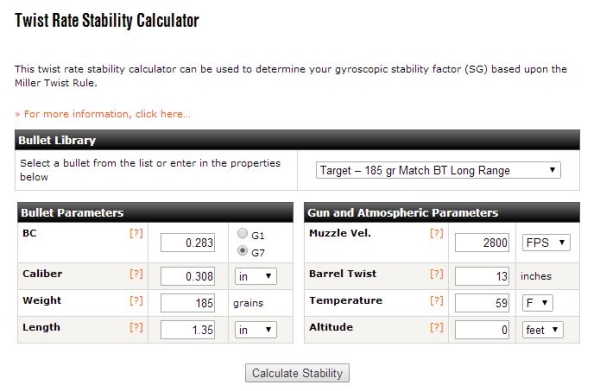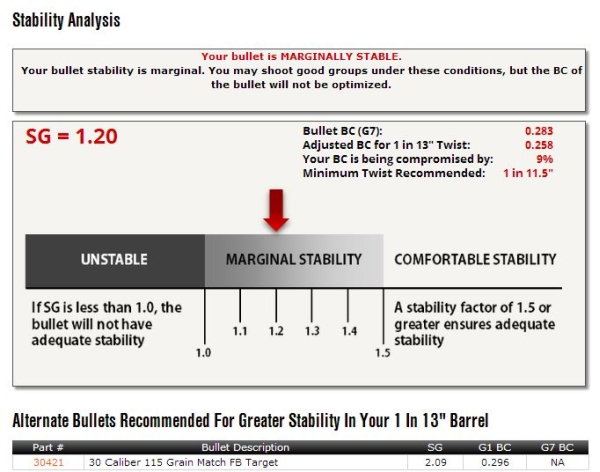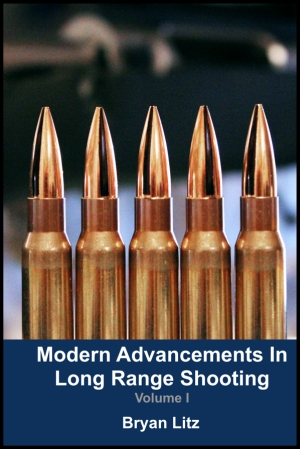By Bryan Litz, Chief Ballistician
We’re happy to announce a major upgrade to our Twist Rate Stability Calculator which is free to use on the Berger Bullets webpage. The old stability calculator was pretty basic, and would simply return a gyroscopic stability number based on your bullet, twist rate and atmospheric conditions. This was used to determine if your barrels twist rate was fast enough to stabilize a particular bullet or not, based on the Gyroscopic Stability Factor (SG) being greater than 1.4.

The bullet parameters on the left can be auto populated by selecting a bullet from the list above. You can then put in your gun and atmospheric parameters on the right and click “Calculate Stability” to get the results shown in the below picture.
The new calculator still calculates SG, but also goes much further. In addition to calculating stability, the upgraded calculator can also tell you if your stability level is harming the effective BC of your bullets or not. Extensive testing has proven that bullets fired with stability levels between 1.2 and 1.5 can fly with excellent precision (good groups), but suffer from a depressed BC, sometimes as much as 10%. Shooting the bullets from faster twist rate barrels allows for the bullets to fly better and realize their full BC potential.

The Stability Analysis will show you how stable your bullet is, as well as how that stability might affect your bullet’s Ballistic Coefficient (BC). It will even recommend alternative bullets that might better suite your barrel’s twist rate.
 For example, consider the .30 caliber 185 grain LRBT (Juggernaut) bullet. When fired from a 1:13” twist barrel at 2800 fps, this bullet has a stability factor of 1.2, which stabilizes the bullet enough to shoot with good precision, but the effective BC of this bullet is reduced by 9%. Increasing the twist rate to 1:11” or faster results in this bullet achieving a stability factor greater than 1.5, and allows it to fly with a higher actual BC.
For example, consider the .30 caliber 185 grain LRBT (Juggernaut) bullet. When fired from a 1:13” twist barrel at 2800 fps, this bullet has a stability factor of 1.2, which stabilizes the bullet enough to shoot with good precision, but the effective BC of this bullet is reduced by 9%. Increasing the twist rate to 1:11” or faster results in this bullet achieving a stability factor greater than 1.5, and allows it to fly with a higher actual BC.
The math used to do the calculations is based on extensive live fire testing conducted in the Applied Ballistics Laboratory over the past several years. Detailed analysis of these stability tests and other activities in the AB Lab are published in Modern Advancements in Long Range Shooting – Volume 1. If you’re interested in the science behind the stability calculator, and how bullets react to being fired with marginal stability, you can pick up a copy of that book and read all about it.
To access our Twist Rate Stability Calculator please click here.